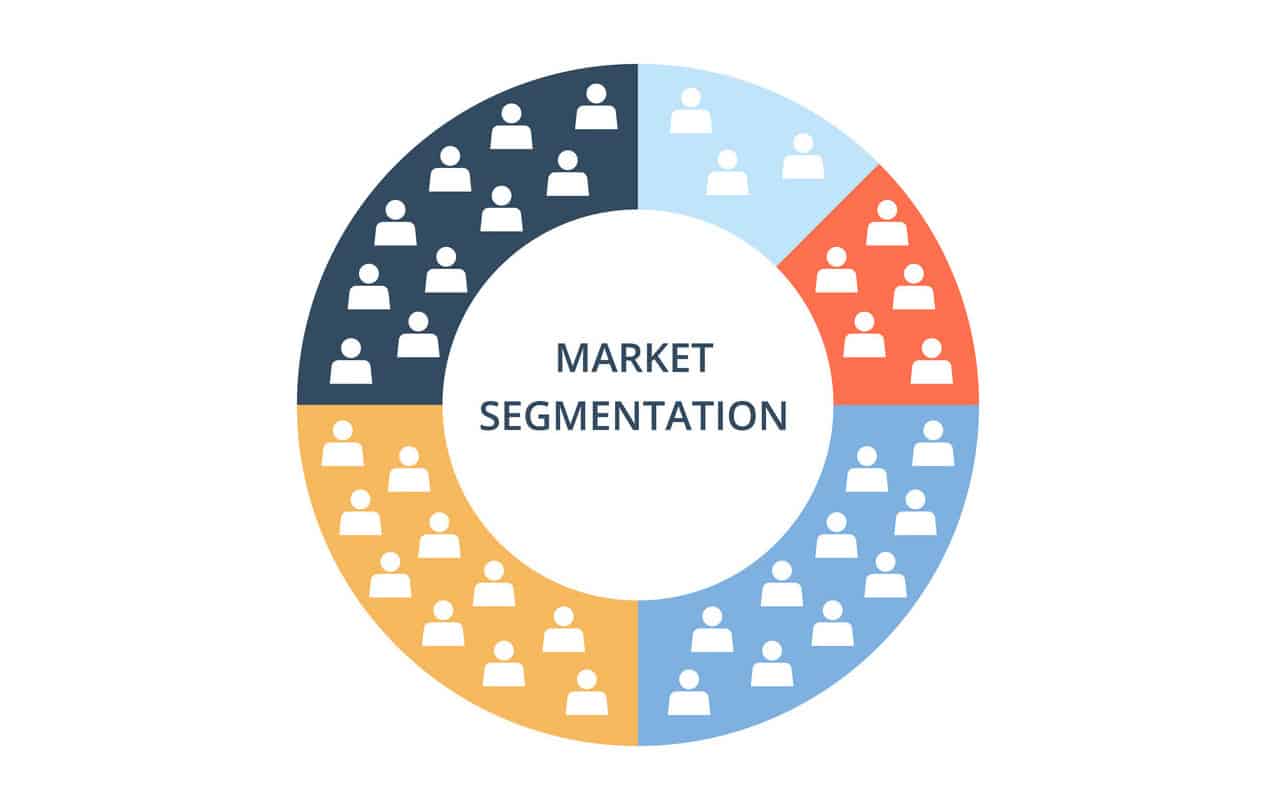Success in marketing depends solely on the understanding of your target market. And how best can you understand your target market if not through market segments and segmentation.
Market segments give you a clear understanding of what clients want and how you can help them go about getting it while ensuring a healthy market for your brand.
In this article, we discussed the meaning and the list of different market segments that you’d need to guarantee a healthy market for you and your clients.
Definition of Market Segments
Market segments are subsets of a broader market that group different people together primarily on one or more common criteria. Corporations and their marketing teams define a target market for their products and services depending on a lot of variables.
In addition, marketing professionals tackle each group differently, but only after they have a thorough understanding of the target consumer’s demands, lifestyles, demographics, and personality.
Market Segments in Action
Market segments are typically utilized in marketing strategies to assist organizations to tailor their products and services to the needs of specific segments. Simply put, to determine a target market, market segments are frequently utilized.
In an otherwise homogeneous sector, market segments are a group of different clients who have equal likes and dislikes. For example, individuals, families, businesses, organizations, or a mix of any of these can be clients.
Furthermore, market segments are recognized to respond to different marketing strategies, plans, or promotions in predictable ways. Hence, when deciding on a target market, marketers use segmentation. Market segmentation, therefore, is the practice of breaking down a market into sub-groups with similar characteristics.
A corporation may already have a product but not yet know who its target market is. In this scenario, it’s up to the business to identify its market and tailor its offering to its target group. To illustrate, a bookshop that is next to a college, instead of attempting to attract high-value business customers, can market its books to encourage college students to enjoy happy hour.
Benefits of Market Segments
Market segments are important because it allows you to focus your marketing efforts and resources on targeting the most valuable consumers and accomplishing your company objectives. In other words, it aids in getting to know your clients, identifying what’s needed in your market group, and determining how your product or service may best meet their needs.
The following are the major benefits of market segmentation.
#1. Generates more powerful marketing messages
Knowing who you’re talking to allows you to craft more effective marketing campaigns. You can avoid using generic, ambiguous language that appeals to a wide range of people. Instead, employ a direct message that relates to your target audience’s needs, wants, and distinctive traits.
#2. Determines which marketing strategies are most effective.
It might be tough to tell what methods would attract your ideal audience when there are so many to choose from. Therefore, using several methods of market segments will lead you to the most effective marketing techniques. You can identify the finest solutions and techniques for reaching your target audience after you know who they are.
#3. Creates hyper-targeted advertisements
You can target audiences with digital ad services based on their age, geography, purchase histories, interests, and more. Also, you may use these particular traits to produce more effective, digital ad campaigns when you employ market segmentation to define your audience.
#4. Set yourself apart from the competition
Market segments help you to differentiate yourself from the competition by being more detailed with your value propositions and messaging. Rather than blending in with the competition, you may set yourself out by focusing on distinct consumer demands and traits.
#5. Increase consumer loyalty
Through market segments, you can deliver and communicate services that uniquely serve and resonate with your clients when you understand what they want and need. This particular value and messaging strengthens brand-customer ties and creates long-term brand affinity.
#6. Look for opportunities in specialist markets.
The practice of identifying segments of industries and verticals with a significant audience that can be served in novel ways is known as a niche market. You can uncover underserved niche markets for which you can develop new products and services by segmenting your target market.
#7. Maintains your concentration
Targeting in marketing helps you stay on track with your messaging and marketing goals. It aids in the discovery of fresh marketing opportunities as well as the avoidance of distractions that may lead you away from your target market.
Identifying Market Segments
The following three criteria, in general, must be met in order to determine market segments. To begin, a sub-primary group’s demands must be consistent. Secondly, the segment’s qualities must be distinct. Conclusively, the sector responds to marketing approaches similarly. Prospective purchasers are divided into categories based on how much importance they place on a product or service.
List of Different Market Segments
#1. Demographics
Demographic market segments imply that a list of people with comparable traits will have similar lifestyle patterns, tastes, and interests, which will impact their purchase decisions. To build target populations with the highest possibility of buying their products, demographics are predominantly associated with other segmentation tactics.
Nevertheless, age, gender, occupation, income, and education are all determinants in demographics. Questionnaires are one method of gathering demographic data and may include the following questions:
- How old are you?
- How much money do you make as a family?
- What is your highest educational level?
- What gender do you consider yourself to be?
- Do you live in a home that you own or one that you rent? etc.
Read Also: NICHE MARKET: Definition & 20 Best Examples Of Niche Market Products
The benefit of demographic segmentation is that it is simple to get data. For marketing strategy and business goals, government sources such as the Bureau of Labor Standards provide data on households, income, education, and health. Similarly, apps that track more precise demographic data for contact tracing and travel patterns have also been developed by companies. Instead of research data sources, questionnaires reveal the specific demographics of a target market and uncover actionable insights.
Additionally, when mixed with other variables, demographic segmentation provides valuable insights into which specific customers within a target market will buy products and how to reach them with the right marketing messages.
#2. Behavioural
Behavioural market segments define key steps in their ideal customer’s buying process, such as what they want, why they want it, the benefits they seek, and ultimately, how they go about meeting their list of wants.
B2C and B2B market segments are studied using behavioural segmentation. Companies, on the other hand, can better target their marketing messaging when they understand why customers buy. The following are examples of possible behaviours:
- Reason for purchase. Are purchasers looking for the best deal, high ratings, safety concerns, or other factors? What issue are they attempting to resolve?
- It’s a special occasion or event. Are customers purchasing for a special occasion such as a holiday or an anniversary? Are B2B buyers seeking to spend their budget before the end of the year?
- Features of the product. Is the consumer seeking the most up-to-date technology, the safest goods, or to be the first to purchase the newest item?
- The stage of the buyer’s journey. Is the buyer looking for information to make a future purchase? Or do they want to give the brand a try for the first time?
- Lastly, the level of engagement. Is the purchaser a die-hard fan hunting for the most recent release?
These are only a few of the actions that customers engage in when making purchases. Therefore, marketers who understand why consumers buy their products can perhaps tailor their marketing strategies to address those behaviours.
#3. Psychographics
People are divided into groups based on their personality, lifestyle, social position, activities, interests, opinions, and attitudes in psychographic segmentation. Psychographics is a great complement to demographics since it identifies the reasons why people make certain decisions.
Psychographics are used by businesses to segment their markets in order to understand:
- Consumer perceptions of their goods and services
- What customers truly want—and why they want it
- Existing products or services have flaws or pain points.
- Future engagement possibilities
- How can they communicate more effectively with their target audience?
Furthermore, Three sorts of survey questions are used by marketers to gather psychographic data.
- Open-ended questions with a qualitative approach, such as “What is your biggest challenge with…”, will allow you to gain a better insight into the respondent’s issues.
- Likert scale questions. This will reveal how strongly a responder agrees or disagrees with a statement. For example, “strongly agree” or “strongly disagree,”. And also provide marketers with insight into how important the topic is to them.
- Semantic differential questions. People are asked to score a product, brand, organization, or other attributes, which helps marketers understand their attitudes.
#4. Geographic
Lastly on the list of different market segments is Geographic. Marketers can use geographic segmentation to group people based on where they live, work, or travel. The location has a significant impact on purchasing habits, which marketers can use to develop marketing messages.
Moreover, marketers use geographic segmentation variables such as country, region, state, province, town, climate zone, or zip code. Culture and population density (urban or rural) are also important variables to consider when conducting market research. These location variables will have an impact on what problems people in that region face and how marketers can help solve them.
The benefit of geographic segmentation is data is relatively easy to obtain through online sources. Also, marketers can mix other variables like behavioural segmentation to have a profile for their target market. Alternatively, they can sharpen their messages to the specific audience of a particular location with geographic.
What are the 6 market segments?
This completes your knowledge of the six categories of market segmentation: transactional, needs-based, needs-based geographic, psychographic, and demographic.
What are key market segments?
Demographic, regional, psychographic, and behavioral segmentations are the four main forms of market segmentation that you should be aware of. If you want your business to have long-term success, you must comprehend what these four segments are.
What are the 7 market functions?
The seven components of marketing include selling, managing products and services, managing marketing information, pricing, financing, and distribution. You may better focus your efforts and develop plans to promote your organization if you have a solid understanding of the fundamentals of marketing.
What are market segments example?
Interests, lifestyle, age, gender, and other factors are typical market segment characteristics. Geographical, demographic, psychographic, and behavioral market segmentation examples are frequently used.
Why is market segmentation important?
Understanding the many customer segments that make up a market is what market segmentation is all about for organizations. Marketers can successfully target the segments that are most beneficial to their business by assembling people with similar traits.
What are the 7 market segmentation characteristics?
Age, gender, family situation, profession, earnings, race, and religion are all included. You may connect with your customers more effectively by marketing to specific demographics. Geographics: With this sort of segmentation, the main factors affecting your clients’ needs are region, climate, and population density.
What are the 3 C’s in business?
Customer, Company, and Competitors are the three Cs of brand development. There are hardly many good books on strategy. Any MBA student will be knowledgeable about these: By Michael Porter, Competitive Strategy and Advantage.
Conclusion
To wrap it up, market segments enable businesses to target customers based on their distinct characteristics and wish list. Although developing an effective segmentation strategy can take time and effort. With the information contained in this article, this can, however, be made seamless.
Related Articles
- Market Segmentation: All you need to know with Examples
- PSYCHOGRAPHICS: Best Practices & All You Need To Know, Simplified!
- Target Marketing: All you need to know
- Types of Market Segmentation (+ Benefits, Tips & Examples)
- GEOGRAPHIC SEGMENTATION: Best Practices to Scale Business With Examples.
FAQs On Market Segments
What Are Market Segment Examples?
Common examples of market segmentation include geographic, demographic, psychographic, and behavioural.
How Do You Identify Market Segments?
It should be possible to describe a segment according to descriptive characteristics (geographic, demographic and psychographic) or behavioural considerations (consumer responses to benefits, usage occasions or brands).
What Is Geographic Segmentation Example?
An ice cream company segmenting a country depending on how hot different regions are and targeting those specific areas that are hottest and thus more likely to buy ice cream is an example of geographic segmentation.
What Are Benefits Of Market Segmentation?
- Profitability rises as the success rate rises.
- Customer retention.
- Creates and distributes market opportunities
- Market campaigning that works.
- Resource Management that is both wise and efficient.
- Increased Customer Satisfaction
What is Market Segmentataion, Its Advantages & Disadvantages
(i) The marketer can spot and compare marketing opportunities. (ii)Differences in customer response to different marketing tools serve as the basis for deciding on the allocation of market funds to different customer groups. (iii) The marketer can modify his product/service and marketing appeals to suit the target segment






